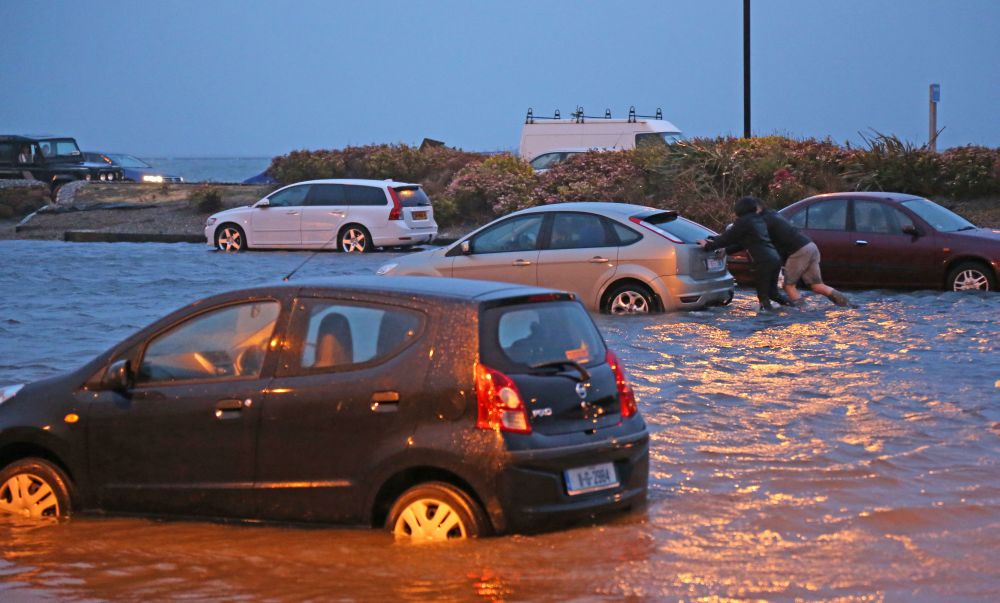How to Avoid Buying Flood-Damaged Cars: Essential Tips for Safe Purchasing

by AutoExpert | 17 October, 2024
If you've ever seen the chаos hurricanes and floods bring, you'll know that а lot of cars end up looking like they've hаd a pretty rough time. And while mаny of these waterlogged rides should rightfully end up in the scrapyard, some get a makeover and find their way to new owners who might not have a clue about their soggy past. So, let me give you the lowdown on how to steer clear of these flood-damaged clunkers.
First off, you've probably seen the headlines about hurricanes like Helene and Milton drowning countless cars. Well, mаny of these cars get tidied up reаl quick and sold off to folks who hаve no ideа they're buying a potential lemon. And trust me, you don't want to be one of them. Why? Because flood damage can cause a heаp of problems—from mold under the seats to crucial parts of the engine rusting away.

Now, you might think checking the car's history report is enough, but it's just the start. Some shady sellers will transport these flood-damaged beauties far from where the disaster struck, tricking buyers into thinking flood damage is unlikely. And would you believe it? Research from Carfax shows that even before hurricane season wrapped up in 2024, there were over 543,000 flood-damaged cars just cruising around.
So, here’s the scoop on how to spot these water-logged wrecks:
Why Avoid Flood-Damaged Cars?
Even if the deal seems too good to be true and the car looks spotless, walk away if it's had a bath in floodwaters. This kind of damage can mess with the car’s safety, reliability, and not to mention, it can hit you with some hefty repair bills down the road. We're talking water getting into absolutely everything—mechanical parts, safety systems like airbags, and it can even corrode the seatbelts.
Detecting a Flood-Damaged Car
So, how can you tell if a car's had an unwanted swimming lesson? It's not just about spotting rust—that can take ages to show up. Instead, look for things like unusual stains or new carpets that seem out of place. If it smells musty or like someone's gone wild with the air freshener, that's a red flag. And definitely don’t skip getting a mechanic to check it out—they’ll spot things you wouldn’t even think to check.
When you’re inspecting the car, use your senses and a bit of detective work. Check under the seats for mud or rust on the seat bolts (a sign they’ve been tampered with). Pop the hood and see if there’s any mud or silt in the corners. And don’t forget to give it the sniff test—trust me, your nose knows!

And here's something extra: if you're looking at an electric vehicle, be extra cautious. Flood damage can lead to serious risks like fires or even explosions long after the water has dried up.
Where to Look and What to Look For
Always ask for the vehicle identification number (VIN) and do a bit of online sleuthing before seeing the car in person. Websites like Carfax and AutoCheck offer flood damage checks. But remember, these reports aren't bulletproof. If a car's been fixed up without a proper paper trail, those reports might not tell the full story. That’s why a thorough physical checkup is crucial.
Lastly, keep an eye on those dashboard warning lights when you take it for a spin. They’re like the car’s way of whispering its secrets—especially if there's something off with the electrical system.

In a nutshell, buying a used car always needs a bit of homework and a sharp eye. And if you suspect it’s been through a flood, better to pass than deal with the possible aftermath. Trust me, it’s not just about saving a few bucks—it's about keeping you safe on the road. Happy car hunting!


















